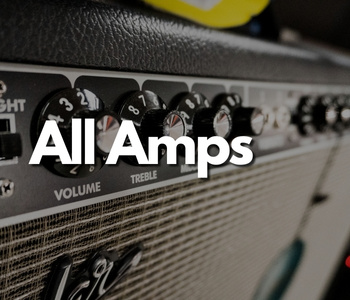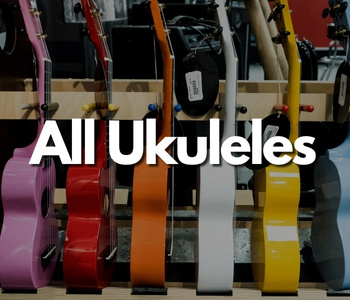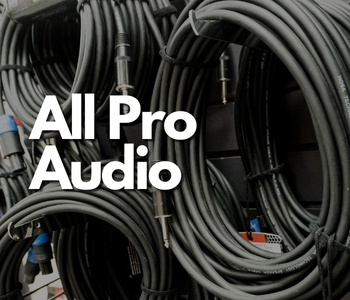About Acoustic Guitars
The tone of an acoustic guitar is the product of three key ingredients. 1) A guitar’s physical body shape. 2) The types of tonewoods used for the back, sides and top. 3) A person’s playing technique (picking vs. strumming or a light vs. heavy touch). It’s the reason the same guitar can sound different in the hands of different players.
Let St. John’s Music help you find the right guitar. We carry a large selection of the top brands in Canada including Yamaha, Fender, Martin (select stores), Taylor (select stores), Guild, Norman, and Alvarez.

There are a variety of different body shapes for acoustic guitars. Each shape has its own tonal personality and physical feel. While most manufacturers are known for their balanced tone and superb playability there are differences in tone from shape to shape. The following are some of the more common shapes for acoustic guitars: Dreadnought, Jumbo, Auditorium, and Folk.
Parlor-Folk
The smallest of body shapes, the folk shape produces an intimate sound that is ideal for recording and stage work. Fingerstyle players will love the balance between bass and melody notes, and because of its smaller size (and lighter string tension) the folk shape is a very comfortable guitar to play. A folk guitar always seems to fill just the right amount of “sonic space” and offers a surprising and unique playing experience.
Dreadnought
The dreadnought is perhaps the most traditional and recognizable shape in the acoustic guitar world. It delivers a vintage sound for the 21st Century and has a loud, full sound with complex overtones, yet retains that balanced acoustic sound. The dreadnought will appeal to flatpickers and lovers of traditional guitar shapes and tones.
Jumbo
The jumbo is the largest body shape. It delivers a full sound in a big package. The tone of the jumbo shape is especially well suited to 12 string models because of the way the additional string tension couples with the size of the body. The result is a guitar with a big sound and a tight, defined midrange.
Auditorium
The auditorium delivers a very even and balanced tone. Thanks to its versatility an auditorium shape is well-suited to handle many playing styles. It’s a perfect place to start for someone who seeks versatility or is still discovering their own sound.
3/4 Size
The 3/4 Size is ideal for school music programs, individual students, and beginners who are more comfortable with a smaller guitar.
Each type of wood has a particular density, stiffness, and flexibility, which, together with the player, translate into a range of tonal frequencies. Top woods are exactly what they sound like, the wood on the top of the guitar.
Nato
Found on entry level guitars, Nato is often referred to as “Eastern Mahogany” by manufacturers due to its similar look, availability, and price. The wood is dense and not particularly easy to work with. Nato is available in large dimensions and is well above average in properties such as resistance to wear, strength, and durability.
Sapele
Sapele is another versatile tone wood that has been around for decades. Despite being a highly sustainable and relatively fast-growing wood, it isn’t too common. Tonally, it does everything that mahogany does, with a little extra treble zing.
Cedar
Cedar tops are usually favored by finger stylists and players with a light touch because it tends to be extremely responsive, and is generally described as having a softer, warmer sound.
Koa
Koa’s captivating beauty is matched by a tone that blossoms over time, especially in the mid range. Its voice is bright and focused, with warm overtones that slowly emerge, adding sweetness and depth.Spruce
Spruce is the most popular top wood that has a dynamic range which is very broad, allowing for everything from aggressive strumming and flatpicking to fingerpicking.
Ash
It is very resonant across the whole frequency spectrum. It has clear bell-like highs, pronounced mids, and strong lows.
Back and Side Wood
Each type of wood has a particular density, stiffness, and flexibility, which, together with the player, translate into a range of tonal frequencies. Back and side woods are literally the wood on the back and sides of your guitar.
Mahogony
Because of its flatter frequency response, mahogany is a good place to start a discussion about tonewoods. Mahogany has a well-balanced, traditional acoustic guitar sound. Its sonic profile is well represented in the midrange frequencies, making for a guitar with thick and present midrange tones.
Maple
A dense hardwood, maple’s tone is extremely focused. Maple is described as having a “bright” sound, and has fewer overtones, resulting in quicker note decay. These traits make it a preferred guitar wood for live performance settings because it cuts through a mix well.
Ovangkol
Not all too common, Ovangkol is an African relative of Rosewood and shares many of rosewood’s tonal properties. You’ll notice a slightly fuller midrange from Ovangkol (when compared to Rosewood) and a top end that’s not quite as bright as maple.
Nato
Found on entry level guitars, Nato is often referred to as “Eastern Mahogany” by manufacturers due to its similar look, availability, and price. The wood is dense and not particularly easy to work with. However, Nato is available in large dimensions and is well above average in properties such as resistance to wear, strength, and durability.
Sapele
Sapele is another versatile tonewood that has been around for decades. Not too common even though it is a highly sustainable relatively fast-growing wood. Tonally, it does everything that mahogany does, with a little extra treble zing.
Koa
Koa’s captivating beauty is matched by a tone that blossoms over time, especially in the midrange. Its voice is bright and focused, with warm overtones that slowly emerge, adding sweetness and depth.
Rosewood
One the most popular and traditional guitar woods, rosewood takes that basic sonic thumbprint of mahogany and expands it in both directions. Rosewood sounds deeper in the low end than Mahogany, and brighter on the top end.
Ash
Ash is very resonant across the whole frequency spectrum. It has clear bell-like highs, pronounced mids, and strong lows.
Laminate Vs Solid Top
What are the benefits of laminate vs solid top? Why go one way or the other? We have both so you can try them out and see what you like.
Solid Top
Solid guitars vibrate much more freely and thus have better tonal quality over a wider dynamic range than guitars that are laminated. Solid wood guitars also have the desirable characteristic of sounding better the more they are played since the wood vibrates more freely over time if it is played and maintained regularly.
Laminate
The advantage of a laminated acoustic guitar is that it’s relatively durable. Since laminated guitars are sturdier than solid guitars, they may be a better choice for younger players or for outdoor use. Laminate is less sensitive to potential damage in humidity.
Acoustic Brands
There are many different acoustic brands and like anything else it boils down to personal preference. Luckily for you, some are better than others, and some are more affordable than others. We can at least break down some of the differences in quality and sound for you.
Yamaha
Yamaha acoustic guitars’ reputation of good quality, great sound and affordable is all true. You can’t go wrong with them. St. John’s Music is a top Yamaha dealer in Canada and we pride ourselves on having the best selection of Yamaha’s entire range of acoustic guitars.
Norman
Looking for something local? Norman guitars are handcrafted in Canada. The first Norman guitars were produced in the early 1970’s. Norman’s reputation for superb quality and excellent value is why St. John’s Music is proud to offer this line to you.
Gretsch
Gretsch acoustic guitars are built with select materials and quality craftsmanship that produce a voice that is inspired by tradition yet undeniably Gretsch.
Martin
C.F Martin & Co. has been creating the finest instruments in the world for over 175 years. It continues to innovate, introducing techniques and features that have become industry standards including X-bracing, the 14-fret guitar and the “Dreadnought” size. One of the world’s leading acoustic instrument makers, Martin guitars are hand-made by skilled men and women who use a combination of new design and techniques along with those introduced by the company founder.
Taylor
Taylor Guitars is a California based manufacturer. Bob Taylor along with Kurt Listug started the company back in the mid 70’s. Taylor guitars has now become the number one acoustic guitar manufacturer in North America. **Only available in Edmonton, Red Deer, and online.
Fender
Looking for the most popular name in guitars? Since 1946, Fender has been the brand that started it all. The Fender line up has something for everyone.
Acoustic Maintenance
Keeping your acoustic guitar in proper playing condition is more important than you think. Over time a guitar can warp and change sound if it is not stored or cared for properly. Keep your acoustic sounding like the day you bought it, with our help.
Humidifying
Some sort of humidifier is essential for acoustic guitars (especially those with Solid Tops that are commonly prone to cracking). The ideal humidity level for guitars is 40-50%. When the humidity is very low around say 20-35% it is best to use a room humidifier in conjunction with an instrument humidifier. And for those with a collection of instruments, refilling instrument humidifiers could be quite a chore, easier instead is to control the rooms humidity with a room humidifier. It is usually best to store the instrument in the case. Not only does it protect it from damage, the case can offer more protection from severe and sudden environmental changes.
Restring
The number of times a player restrings their guitar is a personal preference. If you have never restrung your guitar, just bring on by the store and let us show you how to do it.
Set Ups and Repairs
Buzzing, sharp frets, or just in need of some TLC? St. John’s Music can get your guitar rockin’ again.









